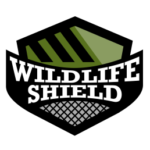Raccoons are smart animals, and just like us, they normally set aside a specific location in areas they have invaded as community latrines. At these sites, they will repeatedly deposit fresh feces on top of old feces. At the end of it all, the site will have piles of raccoon droppings of different ages.
It’s important to note that fresh raccoon droppings are usually tubular in shape, with the same diameter as a nickel and with blunt ends. Fresh feces will be dark in color; however, this largely depends on the animal’s diet. Over time, the droppings will continue to change as it dries up, almost looking like debris or dried up leaves.
So why would you want to clean up raccoon droppings?
Well, raccoon droppings are a nuisance, this is because they not only stain your structures but also cause damage. Raccoon droppings have also been discovered to harbor dangerous parasites that can be transmitted to humans on contacts such as the Baylisascaris procyonis or roundworm.
What should I do when I spot a raccoon latrine in my property?
In case you bump into a raccoon latrine in your property, cleaning the area might help prevent any possible infection. It is important to note that newly deposited eggs are not infectious and will normally take about 2-4 weeks before they are fully infective. Promptly removing and destroying raccoon feces will help reduce the risk of exposure and any possible infection.
Cleaning raccoon feces in your property
The amount of damage that you expect to find after eviction normally depends on the time raccoons spent in your structures. The longer they have been in your structures, the worse the damage. In some cases, if the invasion was spotted quickly, only spot treatments and minor repair might be needed.
What do you need to clean up raccoon feces?
- Nitrile rubble gloves
- Safety goggles
- Shovel
- Rubber boots
- Heavy duty plastic bags
- Respirator (N-95 rated)
- Protective clothing that tucks into gloves and boots.
Things to note when cleaning raccoon feces
Now that you have understood that having a raccoon latrine in your property is harmful, you need to understand how to safely clean up raccoon feces to avoid contracting any diseases. Its important to note that the cleaning process is different depending on where the raccoon feces are situated.
- Wash your hands and skin thoroughly
- After the process, dispose of the gloves
- You could also wear booties to cover your shoes if you didn’t have rubber boots
- Make sure that your respirator is well rated, this prevents breathing in parasite airborne eggs
- During cleaning avoid disturbing the droppings causing them to become airborne.
Cleaning raccoon latrine
- When cleaning the latrine area, mist up the debris and dust with a spray bottle or little water to prevent stirring up the airborne eggs.
- Avoid using a propane torch if the latrine is situated inside
- Raccoon feces needs to be removed using a shovel and stuffing it into a plastic bag. Since the feces is harmful, you could burn it, burry or safely secure it to be taken by garbage collectors.
- Wipe the area using a damp sponge, frequently rinsing it into a bucket. After you have completed cleaning the area, flush the dirty water into the toilet. Ensure that the bucket you used is disinfected with boiling water.
- Place the sponge in a plastic bag and dispose of it.
- To reduce the risk of contracting an infection make sure that you have washed your hands with soap and warm running water. Also, ensure that your garments are laundered thoroughly with detergent and hot water.
Raccoons often seem like cute creatures, don’t be fooled, they could cause more havoc and destruction than anticipated. If you notice raccoons climbing up your attic or in your structures its important that you contact your local wildlife removal company. Getting rid of raccoons involves more than just cleaning up their droppings, they have the capability of causing damages that could spiral into tens of thousands of dollars.

